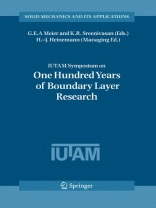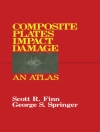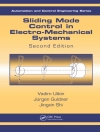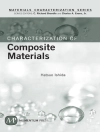Prandtl’s famous lecture with the title “Über Flüssigkeitsbewegung bei sehr kleiner Reibung” was presented on August 12, 1904 at the Third Internationalen Mathematischen Kongress in Heidelberg, Germany. This lecture invented the phrase “Boundary Layer” (Grenzschicht). The paper was written during Prandtl’s first academic position at the University of Hanover. The reception of the academic world to this remarkable paper was at first lukewarm. But Felix Klein, the famous mathematician in Göttingen, immediately realized the importance of Prandtl’s idea and offered him an academic position in Göttingen. There Prandtl became the founder of modern aerodynamics. He was a professor of applied mechanics at the Göttingen University from 1904 until his death on August 15, 1953. In 1925 he became Director of the Kaiser Wilhelm Institute for Fluid Mechanics. He developed many further ideas in aerodynamics, such as flow separation, base drag and airfoil theory, especially the law of the wall for turbulent boundary layers and the instability of boundary layers en route to turbulence. During the fifty years that Prandtl was in the Göttingen Research Center, he made important contributions to gas dynamics, especially supersonic flow theory. All experimental techniques and measurement techniques of fluid mechanics attracted his strong interest. Very early he contributed much to the development of wind tunnels and other aerodynamic facilities. He invented the soap-film analogy for the torsion of noncircular material sections; even in the fields of meteorology, aeroelasticity, tribology and plasticity his basic ideas are still in use.
Innehållsförteckning
Classification, Definition and Mathematics of Boundary Layers.- Prandtl’s Boundary Layer Concept and the Work in Göttingen.- The Full Lifespan of the Boundary-Layer and Mixing-Length Concepts.- Rational Basis of the Interactive Boundary Layer Theory.- Symmetry Methods in Turbulent Boundary Layer Theory.- Viscous/Inviscid Interaction Procedures for Compressible Aerodynamic Flow Simulations.- Instability of Boundary Layers and Transition.- The Application of Optimal Control to Boundary Layer Flow.- Leading-Edge Boundary Layer Flow (Prandtl’s Vision, Current Developments and Future Perspectives).- Application of Transient Growth Theory to Bypass Transition.- Routes of Boundary-Layer Transition.- Instabilities in Boundary-Layer Flows and their Role in Engineering.- In-Flight Investigations of Tollmien-Schlichting Waves.- The Influence of Roughness on Boundary Layer Stability.- Boundary-Layer Instability in Transonic Range of Velocities, with Emphasis on Upstream Advancing Wave Packets.- Laminar-Turbulent-Laminar Transition Cycles.- Boundary Layers Control.- A Century of Active Control of Boundary Layer Separation: A Personal View.- Boundary Layer Separation Control by Manipulation of Shear Layer Reattachment.- Stability, Transition, and Control of Three-Dimensional Boundary Layers on Swept Wings.- Transition to Turbulence in 3-D Boundary Layers on a Rotating Disk (Triad Resonance).- Control and Identification of Turbulent Boundary Layer Separation.- Turbulent Boundary Layers.- The Near-Wall Structures of the Turbulent Boundary Layer.- Turbulence in Supersonic and Hypersonic Boundary Layers.- The Role of Skin-Friction Measurements in Boundary Layers with Variable Pressure Gradients.- The Mean Velocity Distribution near the Peak of the Reynolds Shear Stress, Extending alsoto the Buffer Region.- Numerical Treatment and Boundary Layer Modelling.- Turbulence Modelling for Boundary-Layer Calculations.- Instability and Transition in Boundary Layers: Direct Numerical Simulations.- Wall Modeling for Large-Eddy Simulation of Turbulent Boundary Layers.- Revisiting the Turbulent Scale Equation.- Industrial and Biomedical Applications.- Analysis and Control of Boundary Layers: A Linear System Perspective.- The Development (and Suppression) of very Short-Scale Instabilities in Mixed Forced-Free Convection Boundary Layers.- Computational Studies of Boundary-Layer Disturbance Development.- Special Effects in Boundary Layers.- Hypersonic Real-Gas Effects on Transition.- Stabilization of Hypersonic Boundary Layer by Microstructural Porous Coating.- The Asymptotic Structure of High-Reynolds Number Boundary Layers.- Instabilities near the Attachment-Line of a Swept Wing in Compressible Flow.- Structure Formation in Marginally Separated Aerodynamic and Related Boundary Layer Flows.- High Reynolds Number Turbulent Boundary Layers Subjected to Various Pressure-Gradient Conditions.- Analysis of Adverse Pressure Gradient Thermal Turbulent Boundary Layers and Consequence on Turbulence Modeling.- The Significance of Turbulent Eddies for the Mixing in Boundary Layers.- Unstable Periodic Motion in Plane Couette System: The Skeleton of Turbulence.- Some Classic Thermal Boundary Layer Concepts Reconsidered (and their Relation to Compressible Couette Flow).- Vorticity in Flow Fields (in Relation to Prandtl s Work and Subsequent Developments).- Poster-Presentation.- An Experimental Investigation of the Brinkman Layer Thickness at a Fluid-Porous Interface.- Experimental Investigations of Separating Boundary-Layer Flow from Circular Cylinder at Reynolds Numbers from 105 up to 107 three-dimensional Vortex Flow of a Circular Cylinder).- Scale-Separation in Boundary Layer Theory and Statistical Theory of Turbulence.- On Boundary Layer Control in Two-Dimensional Transonic Wind Tunnel Testing.- Theory of Boundary Layer Instability: Particle or Wave?.












